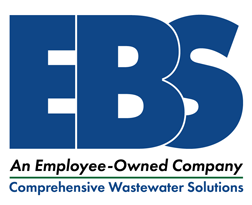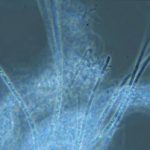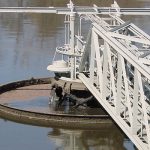Useful Tool or Red Herring
Mike Foster, Principal Consultant – EBS
Paul Klopping, Principal Consultant – Callan & Brooks
 Filamentous bulking is a major problem for operators of municipal and industrial activated sludge systems. For the past thirty years, renowned scientists, such as Dick Eickelboom, David Jenkins, Glenn Daigger, and Michael Richard have written extensively about the identification of the various species of filamentous bacteria and their probable causes. Because these filaments generally cannot be grown in pure cultures under laboratory conditions, most of the causative assignments regarding filamentous bacteria are empirical in nature.
Filamentous bulking is a major problem for operators of municipal and industrial activated sludge systems. For the past thirty years, renowned scientists, such as Dick Eickelboom, David Jenkins, Glenn Daigger, and Michael Richard have written extensively about the identification of the various species of filamentous bacteria and their probable causes. Because these filaments generally cannot be grown in pure cultures under laboratory conditions, most of the causative assignments regarding filamentous bacteria are empirical in nature.
Conventional wisdom says that filamentous bacterial abundance is a function of several principle causes – low dissolved oxygen, low nutrient residuals, high sludge age (low f:m), readily metabolized substrates (organic acids or starches), and sulfides. The problem arises from the fact that very few filaments can be assigned to only one cause and (as mentioned above) the causative relationships for filaments are almost entirely empirical in nature.
When industrial activated sludge was in its infancy twenty or thirty years ago, filamentous identification was a very useful tool. Operators of activated sludge systems did not always understand the critical growth pressures, such as dissolved oxygen, nutrients, and f:m ratio. Therefore, filamentous identification was useful in pointing out deficiencies that today would be considered obvious.
Today, most of the low-hanging operational fruit (dissolved oxygen, nutrients, and sludge age) has been picked. Consequently, the filamentous species predominating today tend to be those not readily assigned to a single cause. While having an expert perform a filamentous identification is still a useful tool, it is critical that a deeper understanding of the system be incorporated when addressing filamentous bulking problems. To complicate matters further, Eikelboom has reported about 80 different filamentous types in a wide range of industrial sectors. Many of these have not been observed in municipal systems and are not represented in the filament identification manuals currently in common use throughout the U.S.
Environmental Business Specialists and Callan & Brooks have many years of experience in identifying filamentous bacteria and employing all of the generally accepted identification techniques. However, we go the extra mile. We evaluate system data and trends to develop a much more complete picture that can be attained by simply identifying filament species.
If your sludge won’t settle, contact EBS or Callan & Brooks. We are experts in addressing settling problems.




